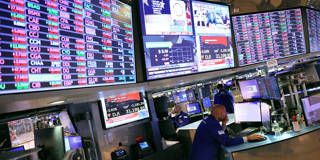While globalization reduced production and labor costs, the current trend toward deglobalization is characterized by high tariffs and geopolitical tensions that threaten to make surging prices a fixture of the global economic landscape. Beating high inflation in the US and elsewhere requires a coordinated global response.
NEW YORK – It is now widely accepted that deglobalization – the retrenchment of global trade, unwinding of capital flows, new barriers to migration, and declining influence of multilateral institutions – is well underway. But policymakers have yet to acknowledge its contribution to global inflation. To rein in surging price growth, the Federal Reserve and other central banks must adjust to the challenges of a rapidly deglobalizing world.
Globalization acted as a deflationary force by reducing labor and production costs. Likewise, the main features of deglobalization – higher tariffs and other trade barriers, together with a shift from global to regional trade flows – are known drivers of inflation. It is no surprise, then, that core goods inflation in the United States has increased sharply, from less than 2% at the start of 2021 to 6% in mid-2022.
I recently argued that US inflation is headed for a decline because the American economy is uniquely equipped to mitigate the impact of surging prices. But deglobalization will likely contribute to inflationary pressures by increasing companies’ operating costs, thereby keeping US inflation higher than the 1-2% range recorded over most of the past decade and hovering near the Fed’s 2% target rate.

NEW YORK – It is now widely accepted that deglobalization – the retrenchment of global trade, unwinding of capital flows, new barriers to migration, and declining influence of multilateral institutions – is well underway. But policymakers have yet to acknowledge its contribution to global inflation. To rein in surging price growth, the Federal Reserve and other central banks must adjust to the challenges of a rapidly deglobalizing world.
Globalization acted as a deflationary force by reducing labor and production costs. Likewise, the main features of deglobalization – higher tariffs and other trade barriers, together with a shift from global to regional trade flows – are known drivers of inflation. It is no surprise, then, that core goods inflation in the United States has increased sharply, from less than 2% at the start of 2021 to 6% in mid-2022.
I recently argued that US inflation is headed for a decline because the American economy is uniquely equipped to mitigate the impact of surging prices. But deglobalization will likely contribute to inflationary pressures by increasing companies’ operating costs, thereby keeping US inflation higher than the 1-2% range recorded over most of the past decade and hovering near the Fed’s 2% target rate.